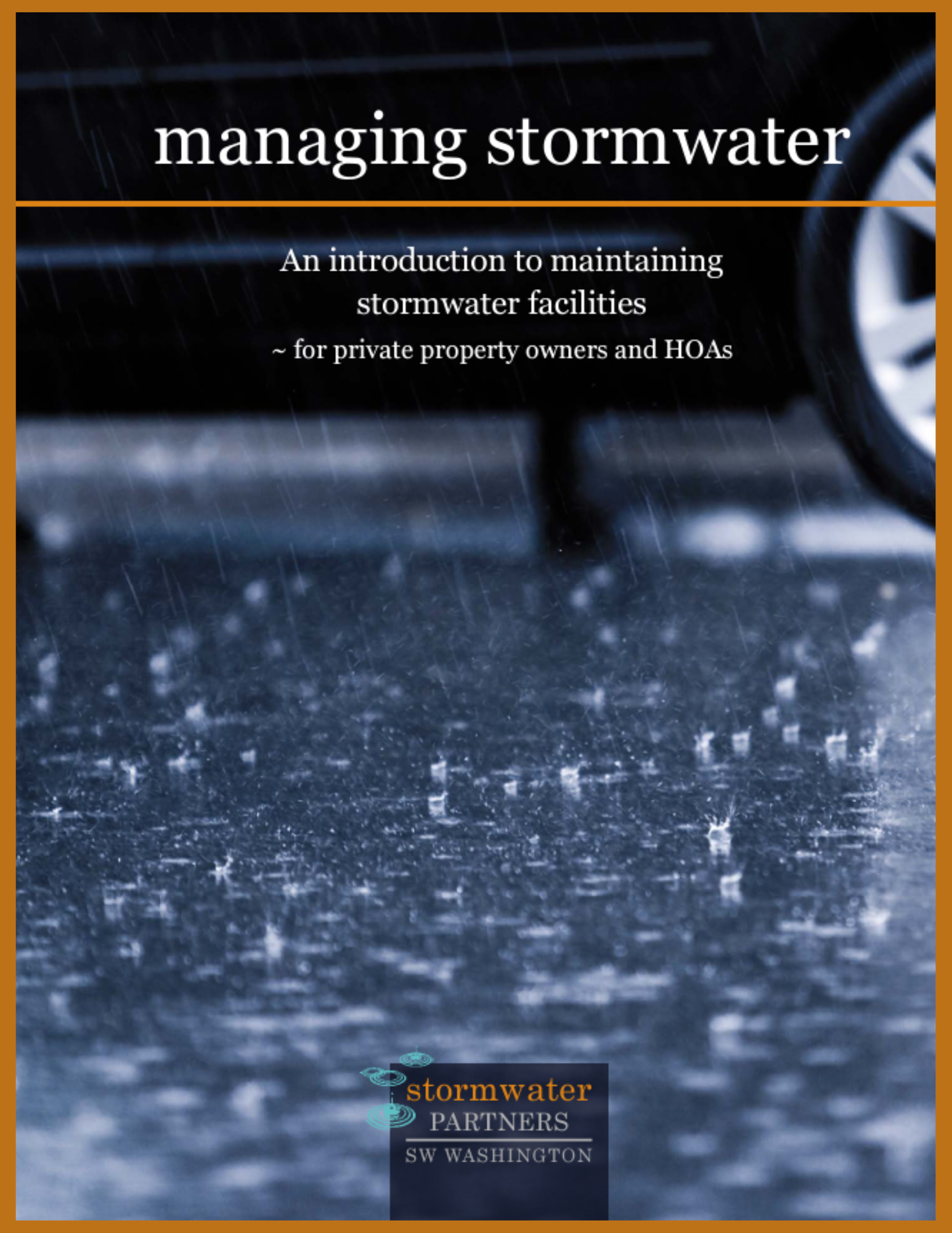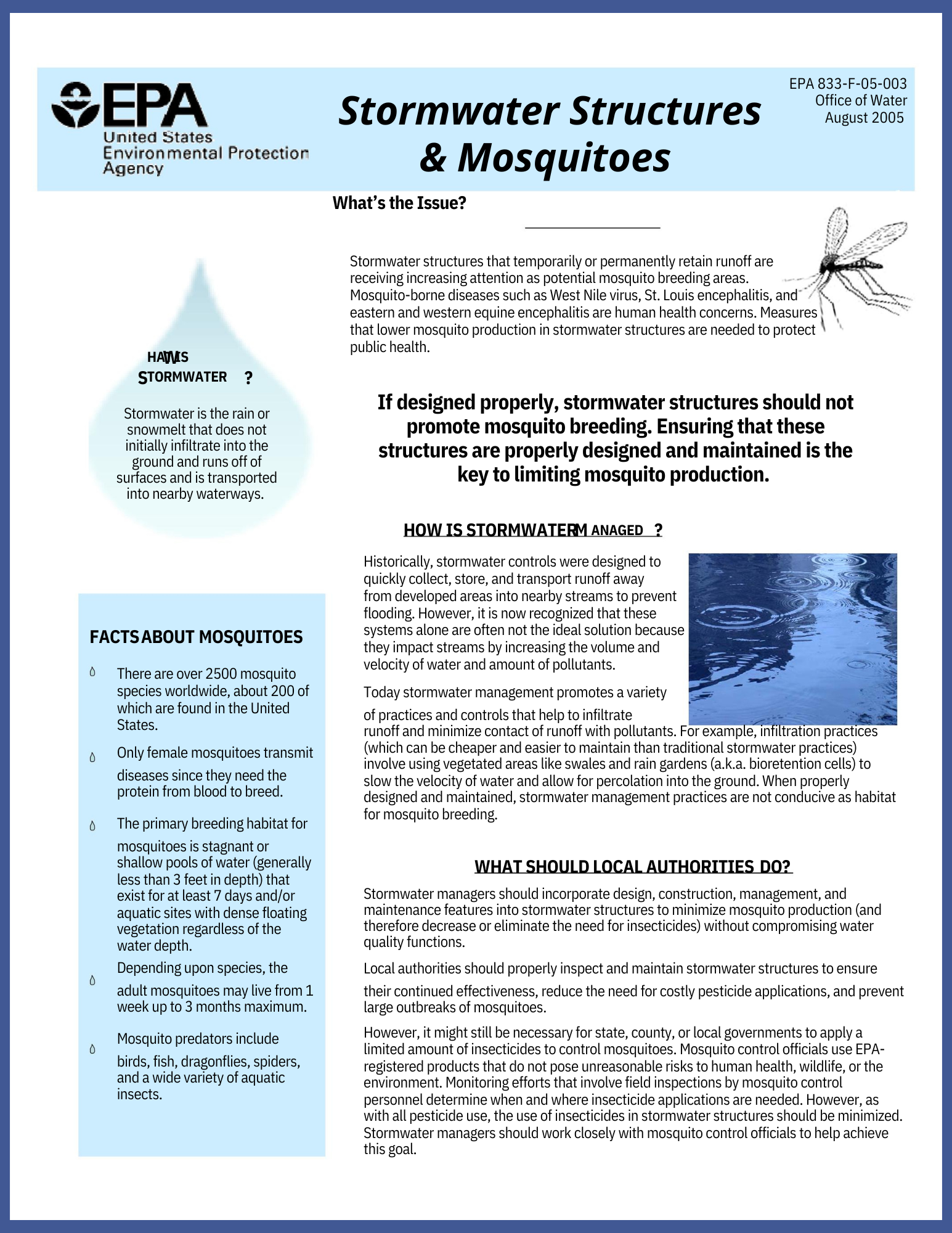Mosquitoes and Our Stormwater System
Given the right environmental conditions, adult mosquitoes can lay their eggs on just about any standing body of water. Some mosquitoes can lay hundreds of eggs in as little as a 1/4 inch of water. The water found throughout stormwater systems provides excellent breeding habitat for mosquitoes. In Clark County, CCMCD treats over 60,000 catch basins a year. These catch basins are treated at least three times a season with rotating larvicide products to reduce larvae from developing resistance.
Please watch the following videos and explore the additional resources below to learn more about the interactions between stormwater systems and mosquitoes.
How Stormwater Systems Work
Courtesy of Clark County Government
Courtesy of the Manatee County Government
Courtesy of susdrain
Courtesy of the City of Durham, NC
Mosquito Habitats in Stormwater Systems
Click on the information icons below to learn more about different aspects of Clark County’s stormwater system and where potential mosquito breeding habitats can be located.

Storm Drain
An opening built into a curb or street that carries stormwater to a catch basin. They come in many different forms.
Catch Basin
An underground concrete basin with a water receiving inlet and outlet pipe. They protect the water quality by trapping sediment and pollutants.
Bioretention Overflow Inlet
Also referred to as a micro-swale, these are outlets for overflow stormwater that cannot be absorbed into the ground.
Headbox
An recessed concrete box used to trap sediment and filter out trash and organic debris with a grate or screen.
Bio-swale Field Inlet
A catch basin used to trap sediment and pollutants. They are typically located at the end of a stormwater facility.
Retention Pond
Additional water storage facilities to retain and release water at a controlled rate during rainfall events.
Bioretention Overflow Inlet
Also referred to as a micro-swale, these are outlets for overflow stormwater that cannot be absorbed into the ground.
Additional Resources

For more information on the different types of stormwater facilities and their components, please visit the Stormwater Partners of SW Washington’s page on Clark County’s local facilities.

For more information on the interactions between mosquitoes and stormwater structures, please review the United States Environmental Protection Agency (EPA) informational brochure.